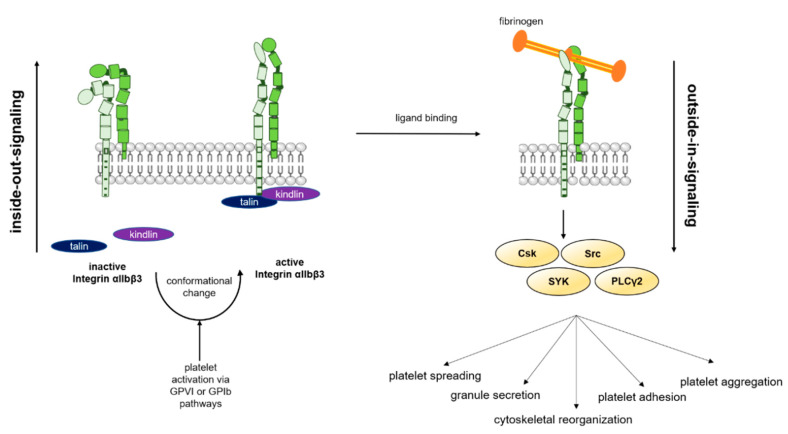Figure 3.
Inside-out- and outside-in-signaling of integrin αIIbβ3. In resting platelets, integrin αIIbβ3 is in an inactive conformation that prevents ligand binding. However, an initial activation of platelets (e.g., via GPIb or GPVI signaling) leads to binding of cytosolic kindlin and talin. This binding induces a conformational change of integrin αIIbβ3 that allows the binding of fibrinogen and other ligands. The process which induces the conformational change of integrin αIIbβ3 is called inside-out signaling. Binding of a ligand like fibrinogen to the extracellular domain of integrin αIIbβ3 triggers a signaling cascade through various kinases. This amplifies different platelet processes such as spreading, granule secretion and aggregation. The process of extracellular ligand-induced activation of integrin αIIbβ3 is called outside-in signaling. This figure was created using images from Servier Medical Art Commons Attribution 3.0 Unported License. (http://smart.servier.com). Servier Medical Art by Servier is licensed under a Creative Commons Attribution 3.0 Unported License”.

